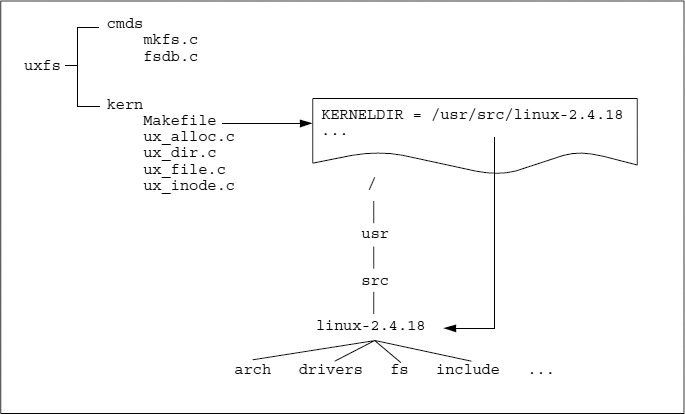Creating a uxfs Filesystem
The first step when developing a new filesystem is to write a mkfs command to place the intial filesystem layout on disk. This includes the following tasks:
- Create and initialize the filesystem superblock and write it to disk.
- Create a root dirtectory inode and lost + found directory inode. For each of the inodes, ensure that the “.” and “.. “ entries are in place and for the root directory, add an entry for lost + found.
- Account for allocation of the two directories within the inode map.
- Account for allocation of two blocks used for the root and lost + found directories.
The code for mkfs can be found on lines 104 to 262. For uxfs, it is a fairly simple program. As with the kernel, it uses various structure definitions and information from ux_fs.h including superblock structural information, inode formats, directory entries and various filesystem boundaries such as the maximum number of blocks and inodes.
Before the filesystem is implemented, it is important to verify the information that mkfs writes to disk. Thus, the next program to write is fsdb, which can read back and display various superblock and inode information.
The fsdb command (lines 264 to 393) is very simple. It accepts two commands that allow the superblock or a specified inode to be displayed.

Figure 14.3 The uxfs filesystem source files and makefile referencing the kernel source.
Get UNIX Filesystems: Evolution, Design, and Implementation now with the O’Reilly learning platform.
O’Reilly members experience books, live events, courses curated by job role, and more from O’Reilly and nearly 200 top publishers.

